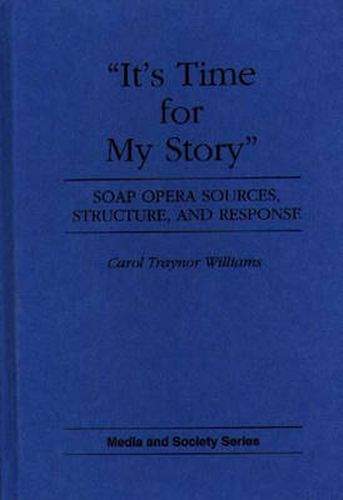Readings Newsletter
Become a Readings Member to make your shopping experience even easier.
Sign in or sign up for free!
You’re not far away from qualifying for FREE standard shipping within Australia
You’ve qualified for FREE standard shipping within Australia
The cart is loading…






Soap opera story, the only mass-public form of continuing narrative today, is oral culture for our electronic era. Carol Williams’ It’s Time For My Story is an examination of soap opera sources, structure, and response, particularly from the critical viewpoints of psychology, both archetypal and empirical, and popular culture, specifically narratology and feminism, that uncover the true nature of the genre. First, Williams traces the development of soap opera from its immediate source in radio and television as well as from its fundamental source in age-old myth and storytelling. Then she analyses the content and form that together make up the structure of soap opera. Finally, she looks at what soap means to watchers and in the process debunks many myths about soap opera (for instance, the myth that soap opera, like all television drama, is merely commercial, produced formulaically by advertisers; Williams argues that soap opera is not only a commercial product but also a popular art form derived from the wellspring of culture and folk story). She also argues that it is a form which has been depreciated because it is historically a woman’s medium. Discussions with writers, creators, and fans are included throughout.
$9.00 standard shipping within Australia
FREE standard shipping within Australia for orders over $100.00
Express & International shipping calculated at checkout
Soap opera story, the only mass-public form of continuing narrative today, is oral culture for our electronic era. Carol Williams’ It’s Time For My Story is an examination of soap opera sources, structure, and response, particularly from the critical viewpoints of psychology, both archetypal and empirical, and popular culture, specifically narratology and feminism, that uncover the true nature of the genre. First, Williams traces the development of soap opera from its immediate source in radio and television as well as from its fundamental source in age-old myth and storytelling. Then she analyses the content and form that together make up the structure of soap opera. Finally, she looks at what soap means to watchers and in the process debunks many myths about soap opera (for instance, the myth that soap opera, like all television drama, is merely commercial, produced formulaically by advertisers; Williams argues that soap opera is not only a commercial product but also a popular art form derived from the wellspring of culture and folk story). She also argues that it is a form which has been depreciated because it is historically a woman’s medium. Discussions with writers, creators, and fans are included throughout.